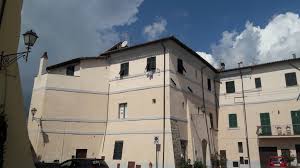- admin
- Nov, 09, 2024
- Places to visit
- Commenti disabilitati su 7. Poniatowski Palace

The large building that dominates the tip of the Capodimonte promontory was constructed, so to speak, “out of spite.” It is named after the Polish prince Stanislaw Poniatowski (1754-1833), nephew of the last king of Poland, Stanislaus II. A great admirer of Italy, which he first visited at the age of 22 during the “Grand Tour,” the prince acquired villas, palaces, and artistic treasures in Rome. In 1808, he managed to purchase the lordship of Capodimonte (which also included Marta and Bisenzio) after the Holy See was forced to sell some properties to finance expenses for French troops during the Napoleonic occupation.
The Capodimonte palace, resulting from the merging of pre-existing lower buildings, was likely designed by the neoclassical architect Giuseppe Valadier. It is said that Poniatowski asked the architect to block the northwestern view of Lake Bolsena from the Rocca since he was not granted this as a residence. Capodimonte honored the prince by naming not only the palace after him but also a street (now Via Puniatoschi).
Known as “Palazzaccio” due to its state of decay over time, the palace has recently been restored, revealing the refined decorative cornices typical of Valadier’s style.
The “L” shape of the building harmoniously encloses the square, defining this part of the historic center. In the past, the small door at number 14 served as an entrance for servants, while the main entrance was located at the center of the facade facing the Rocca. The interiors, originally composed of large interconnected rooms, have been divided into about fifteen private apartments.